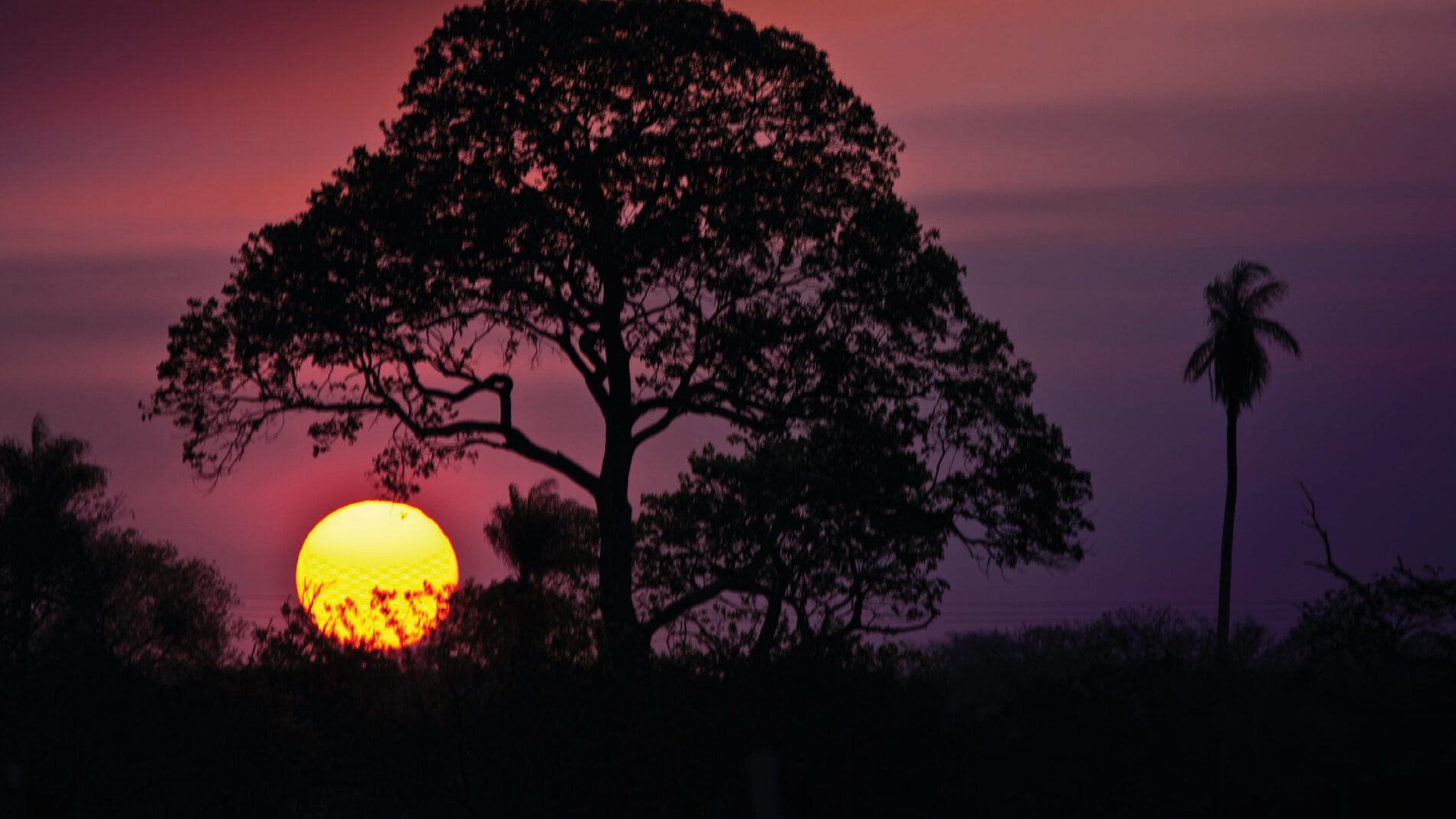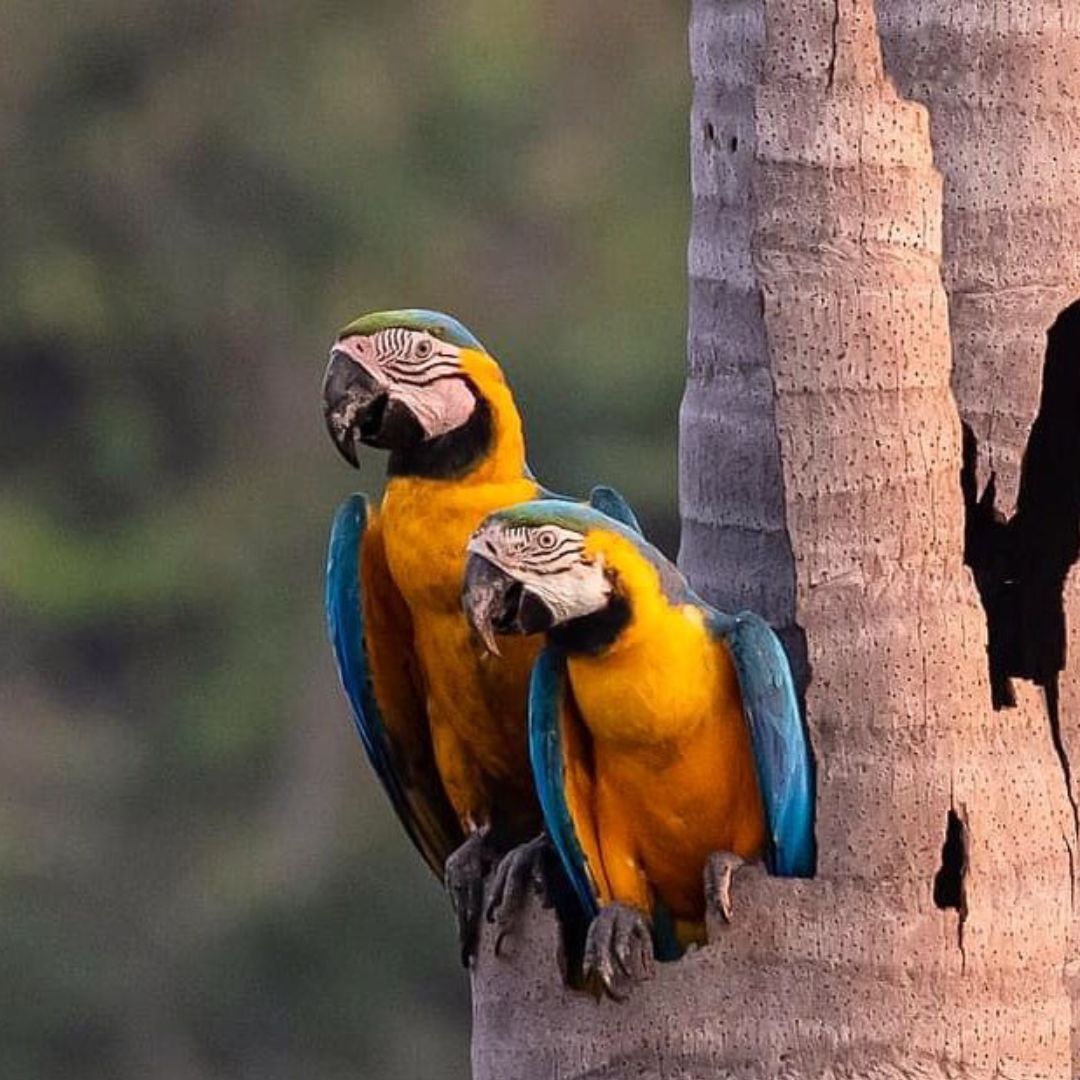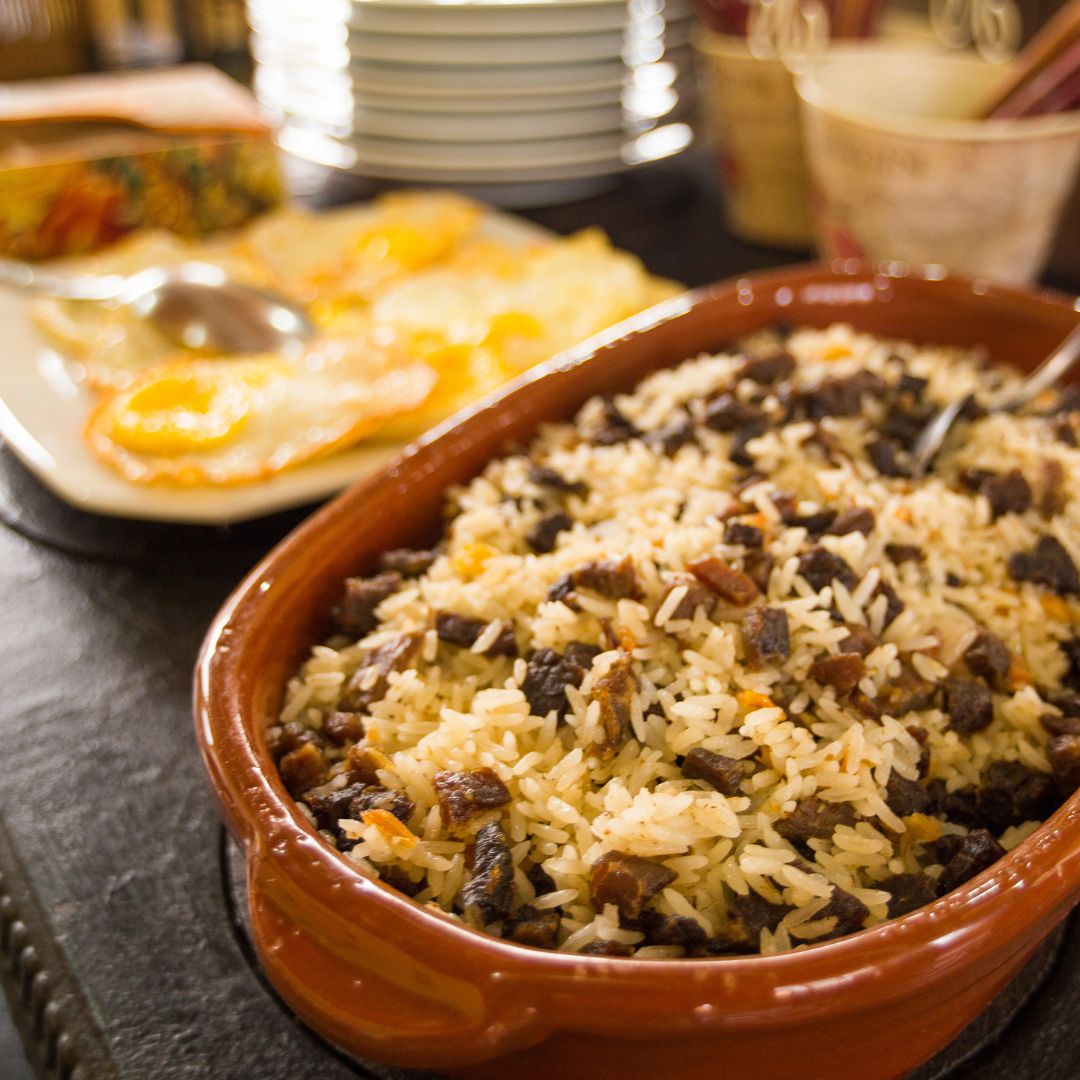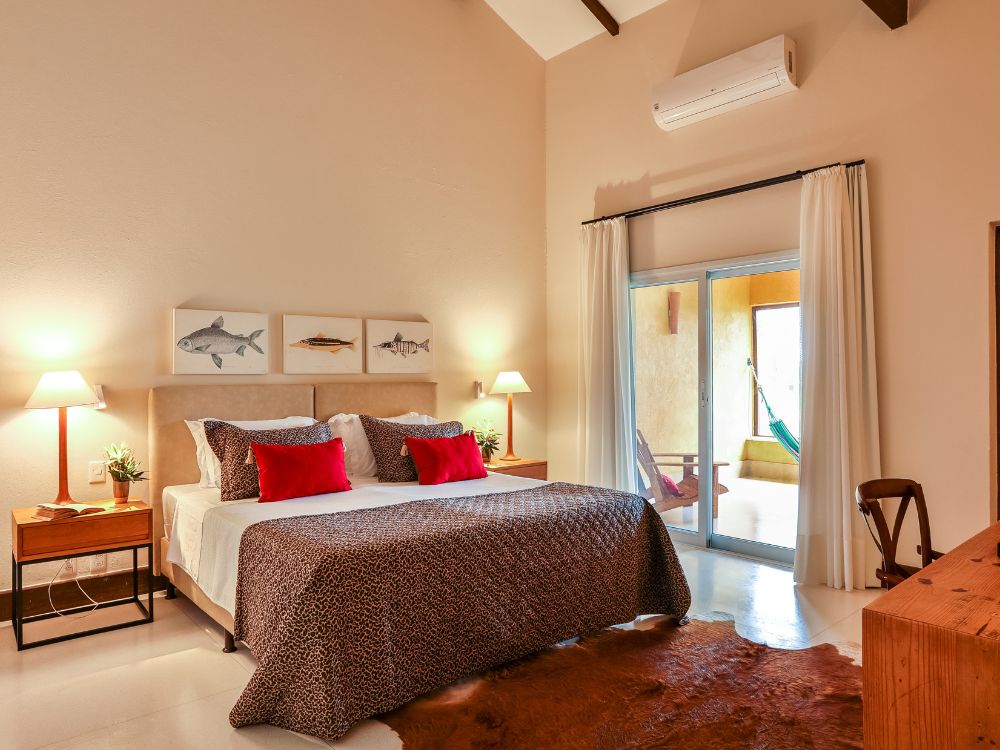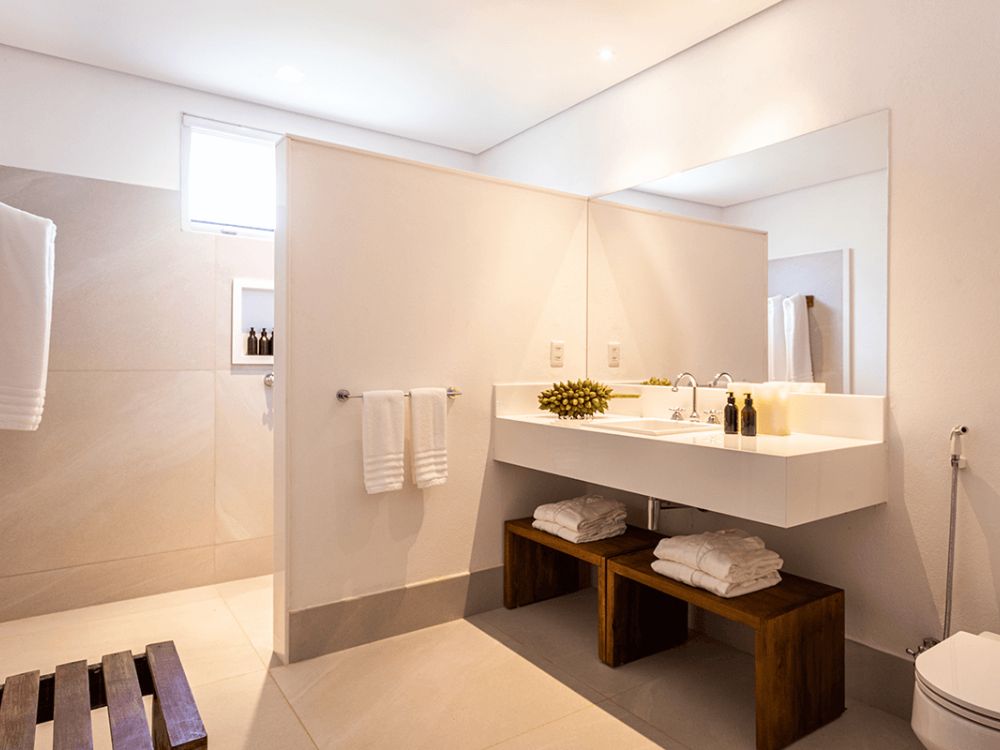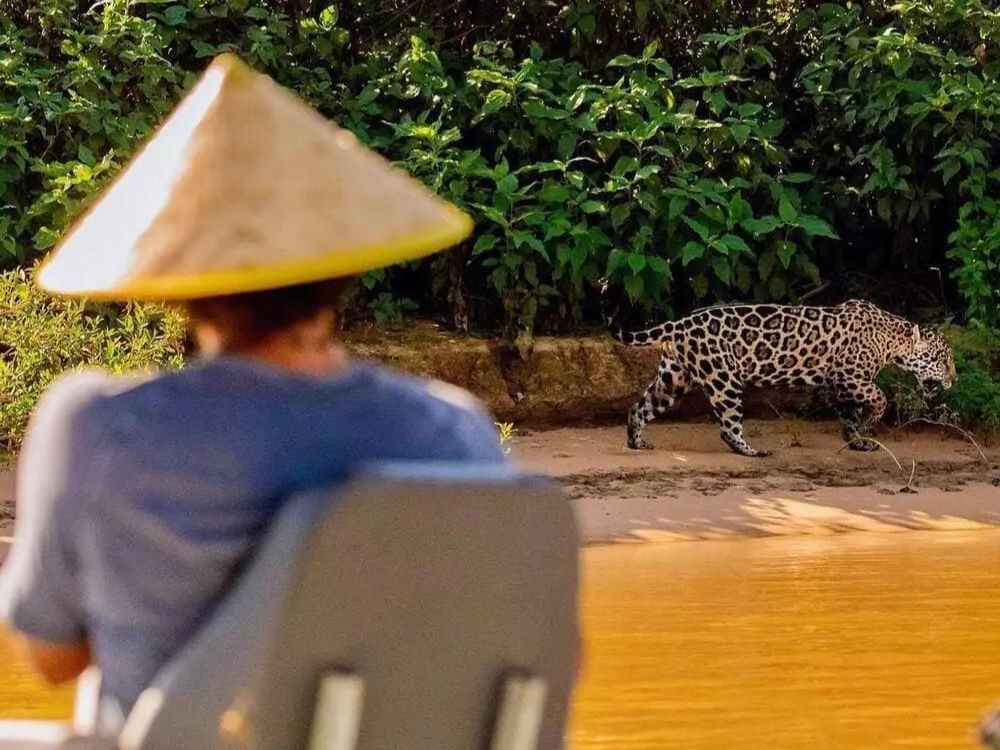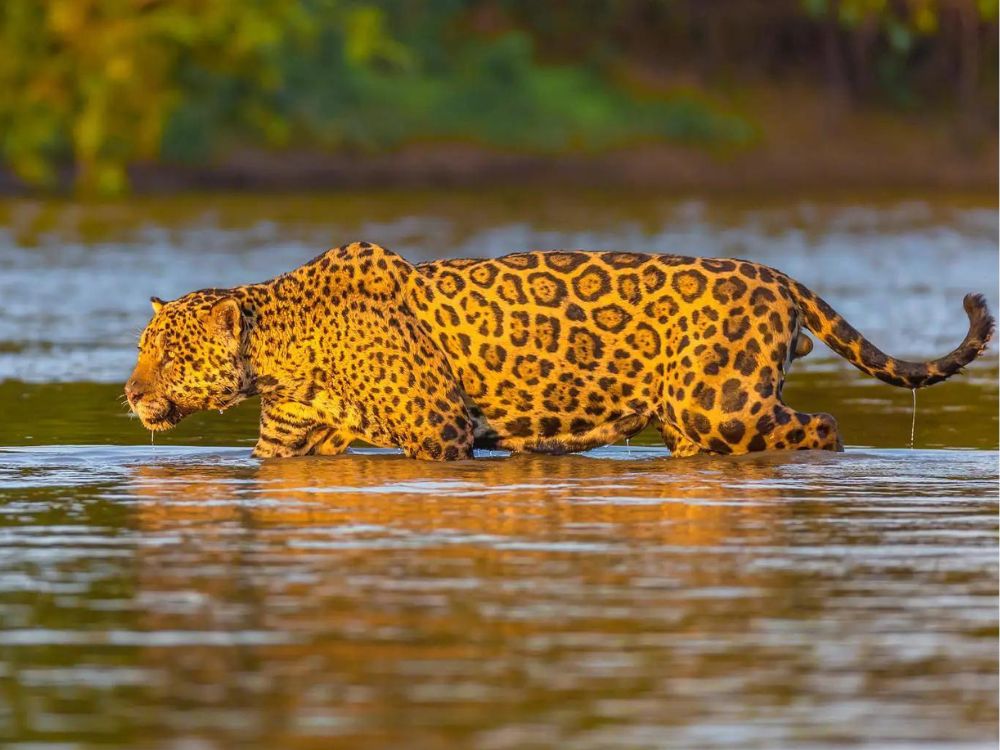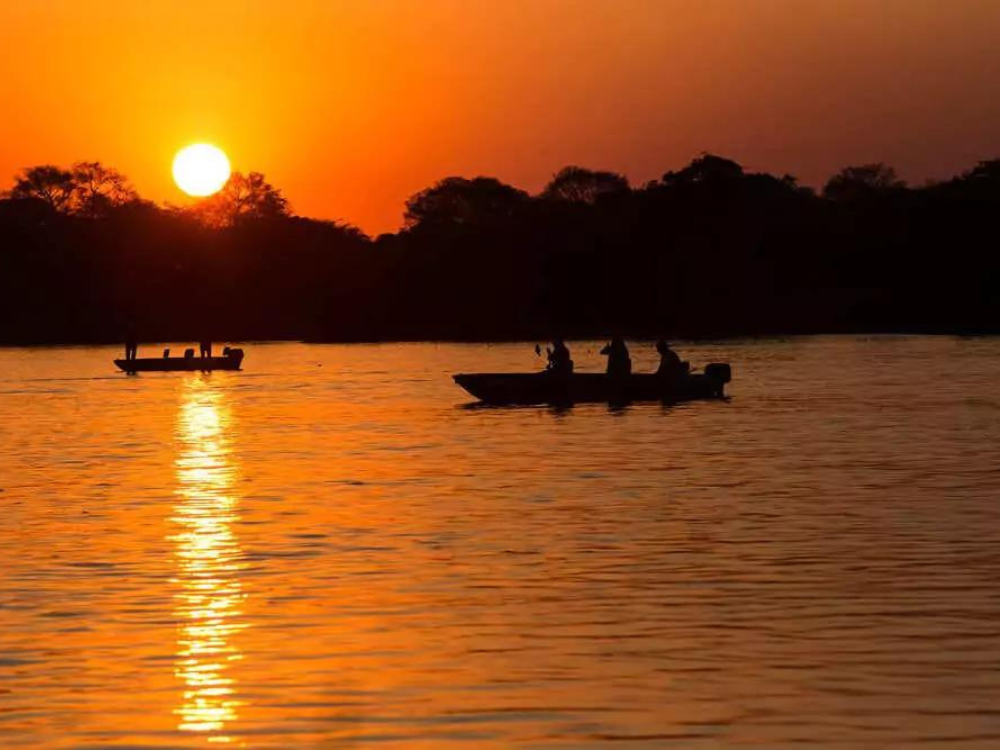Ready for an adventure in the Pantanal Brazil? This travel guide reveals an environment where nature dictates its own rules!
This area is home to the largest population of Jaguar in the world and one of the best ecotourism destinations in Brazil, with hundreds of different species of birds and mammals. Its vast expanse and unique ecosystem offer an unparalleled experience for nature enthusiasts, making it a must-visit destination for those seeking to explore the natural beauty of Brazil.
In this guide, we’ve put together essential information for your Pantanal tour, from the best time to explore to the activities that will make your trip unforgettable. Whether you’re a wildlife enthusiast or a thrill-seeker, this information will help you plan the perfect experience.
Let’s get to it!
1. Where is Pantanal?
2. How to get to Pantanal?
3. When is the best time to visit?
4. What to do in Pantanal?
5. Where to stay in Pantanal?
6. How many days do I need?
7. What is the best Pantanal safari?
8. What to bring?
9. What makes the Pantanal so special?
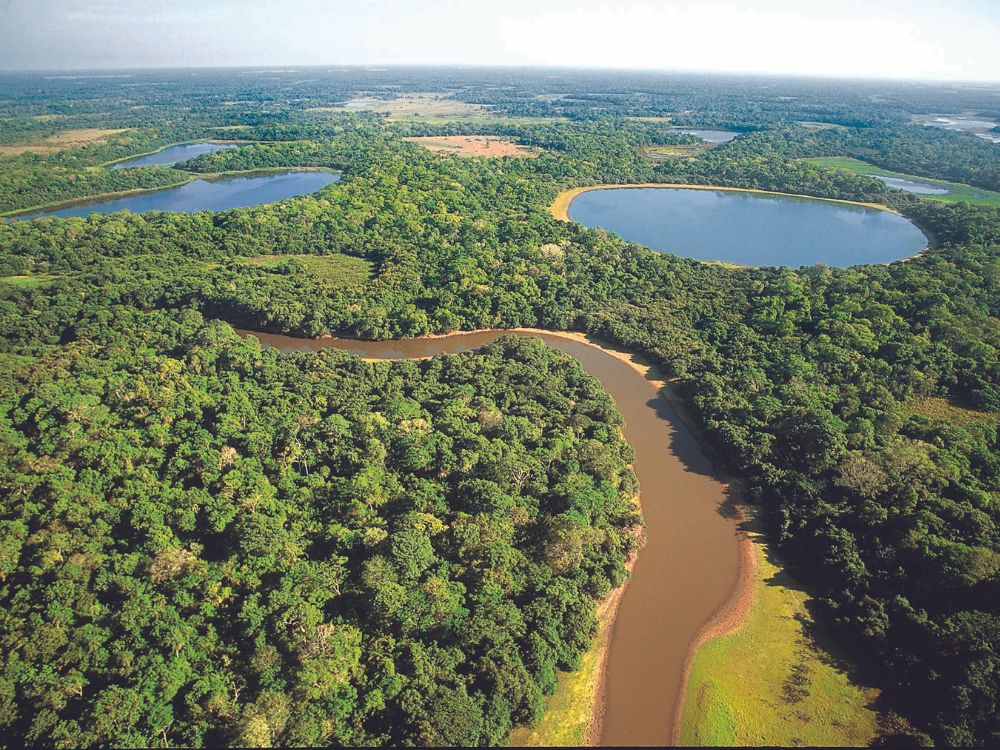
Discover the heart of South America in the wild expanse of the Pantanal.
About Pantanal Brazil
The Pantanal, located in the west of Brazil, is the world’s largest continuous flooded plain, surpassing the size of England. Spanning approximately 195,000 square kilometers, this unique biome is a UNESCO World Heritage site and stretches primarily across the states of Mato Grosso and Mato Grosso do Sul. While Brazil claims the majority of this region, the Pantanal’s rich ecosystem extends into Paraguay and Bolivia, not recognizing the national boundaries.
Despite being often overshadowed by the Amazon rainforest, the Pantanal hosts the continent’s highest concentration of wildlife and is the best place in the world to see jaguars, making it a hidden gem for nature lovers and eco-adventures alike.
The region is a haven for wildlife observers and photographers, boasting around 325 species of fish, 656 species of birds, 159 species of mammals, 53 species of amphibians, and 98 species of reptiles. The Pantanal’s rich biodiversity is complemented by its cultural significance, allowing visitors to immerse themselves in the traditions and lifestyles of the local communities that have coexisted with this ecosystem for generations.
Economically, the Pantanal thrives on fishing activities, tourism, and cattle farming, all with a strong commitment to conservation. Over the years, efforts to educate locals about the economic benefits of preserving wildlife populations have been successful, fostering a balanced and important relationship between wildlife and human activities. This commitment to conservation ensures that the natural beauty and biodiversity of the Pantanal are preserved for future generations.
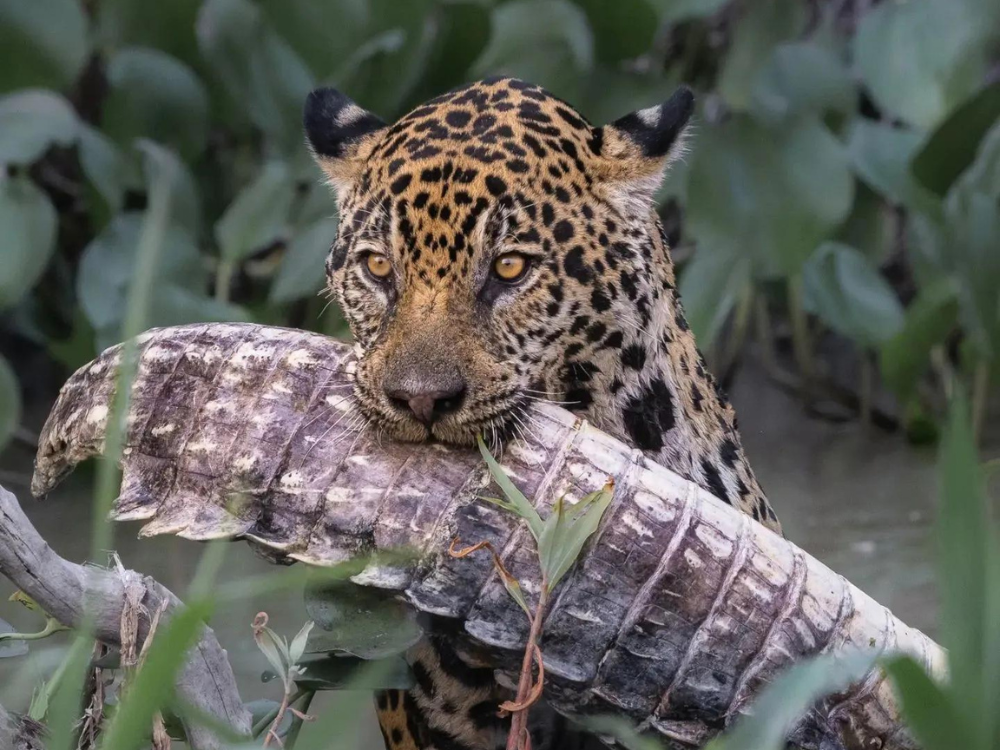
Discover the world’s largest continuous flooded plain in the Pantanal!
How is the Wildlife in the Pantanal?
Did you know the Pantanal is a true wildlife haven? With thousands of different species (as we have seen previously), it’s one of the best places to see animals in the wild! Jaguars, the largest cats in the Americas, roam along the rivers, while capybaras often relax in groups by the water’s edge. Caimans, basking under the sun, regulate the fish population, playing a vital role in the ecosystem.
And the adventure doesn’t stop there! Giant otters, with their playful nature, work together to hunt, while the jabiru stork, the tallest flying bird in South America, adds a touch of elegance to the wetlands. From the shy marsh deer to the elusive maned wolf, the Pantanal offers a truly immersive wildlife experience that you won’t want to miss.
👉 Get to know more about the richness of wildlife in the Pantanal in our full article 15 Pantanal Wildlife Animals and Facts

Photo: Keith Ladzinski
Where is Pantanal?
The Pantanal biome is located in southern Mato Grosso and northwestern Mato Grosso do Sul, and extends beyond Brazil to Paraguay and Bolivia. With an area of 195.000 km², this vast flooded plain connects nations. According to the SOS Pantanal Institute, 151,000 km² belongs to Brazil, with the remaining area divided between Bolivia and Paraguay. The diversity of the Pantanal transcends borders, creating a link between these South American countries.
Fed by rivers such as the Paraguay, Cuiabá, Miranda, and Taquari, the Pantanal is characterized by seasonal flooding. This ecosystem is directly influenced by three major Brazilian biomes: the Amazon, the Cerrado, and the Atlantic Forest, making it one of the world’s most special and unique biomes.
How to get to Pantanal?
For those looking to enjoy Pantanal tours, there are three main transportation modes to enter this biome. For adventurers exploring the Northern Pantanal, the gateway is Cuiabá, Mato Grosso, accessible via Marechal Rondon International Airport (CGB), which offers direct flights from major Brazilian cities such as São Paulo, Campinas, Belo Horizonte, and Brasília, as well as connections from other locations. From Cuiabá, you can take the MT-060 to Poconé (104 km), the MT-040 to Barão de Melgaço (111 km), or the BR-070 to Cáceres (215 km), depending on your itinerary. Buses are available from the local bus station to these destinations. If you are going to Porto Jofre via Poconé, the journey continues along the Transpantaneira road, which offers 147 kilometers of pure immersion in wild beauty. This dirt road reveals the richness of wildlife, providing numerous opportunities to witness animals in their natural habitat.
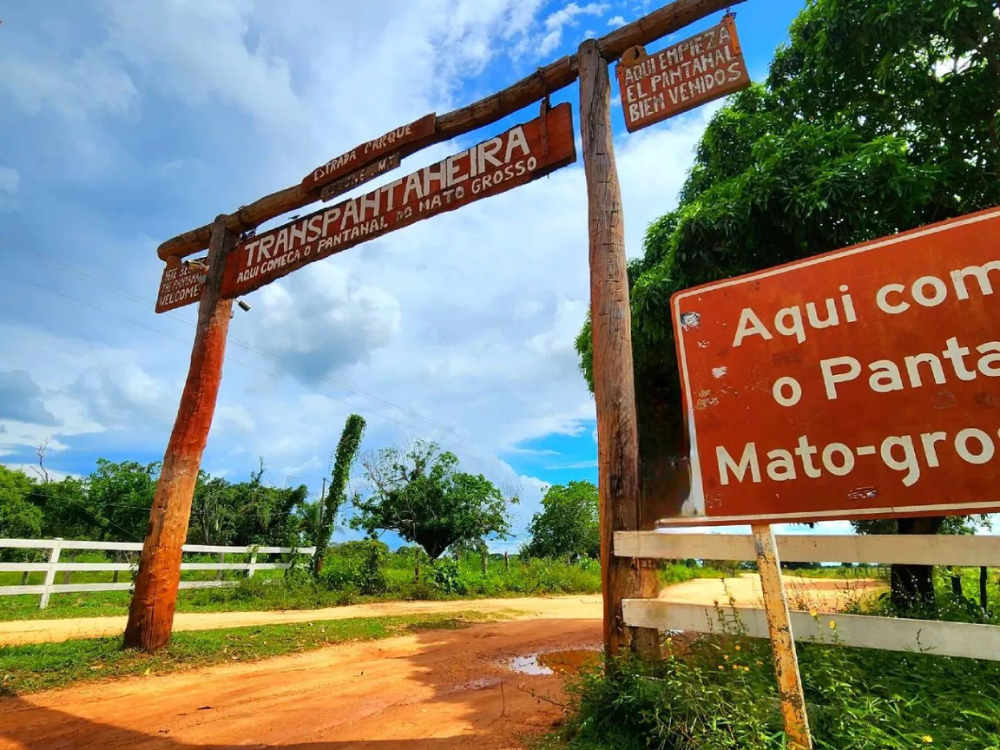
Experience the thrill of the Transpantaneira road, a gateway to the Northern Pantanal’s wonders.
For explorers venturing into the Southern Pantanal, Campo Grande, the capital of Mato Grosso do Sul, is the starting point for adventures in Aquidauana, Miranda, and Corumbá. The Campo Grande International Airport (CGR) offers direct flights from major Brazilian cities (São Paulo, Brasilia, Belo Horizonte and Campinas) as well as connections from others. From Campo Grande, take the BR-262 road to Aquidauana (146 km), Miranda (218 km), or Corumbá (441 km), depending on your itinerary. Buses are available from the city’s bus station, and Corumbá Airport receives direct flights from São Paulo via Azul. For remote lodges, negotiate transport options like cars, boats, or airplanes. Note that during the rainy season (October to March), only 4×4 vehicles can handle the muddy roads.
When is the best time to visit the Pantanal?
The Pantanal is a year-round destination, each season offering its own unique charm and opportunities for exploration. From May to October, the dry and intermediate seasons provide the best conditions for wildlife spotting and outdoor activities, making it an ideal time for your visit. However, the Pantanal’s wet and rainy seasons also bring remarkable experiences, transforming the landscape and offering distinct tours and activities that showcase the region’s ecological diversity. No matter when you choose to visit, the Pantanal guarantees unforgettable adventures amidst its stunning natural beauty.
The annual rise and fall of water in the Pantanal shapes its ecological system, influencing the climate and wildlife behavior throughout the year. With climate change making these seasons increasingly unpredictable, each visit promises its own set of remarkable experiences. Whether it’s exploring the flooded plains by boat during the wet season, enjoying the starry skies and lush vegetation of the intermediate season, or spotting clustered wildlife during the dry season, the Pantanal offers a dynamic and ever-changing landscape that captivates all who visit. To delve deeper into the best times to visit and what to expect each season, read the full article and start planning your adventure to this magnificent wetland.
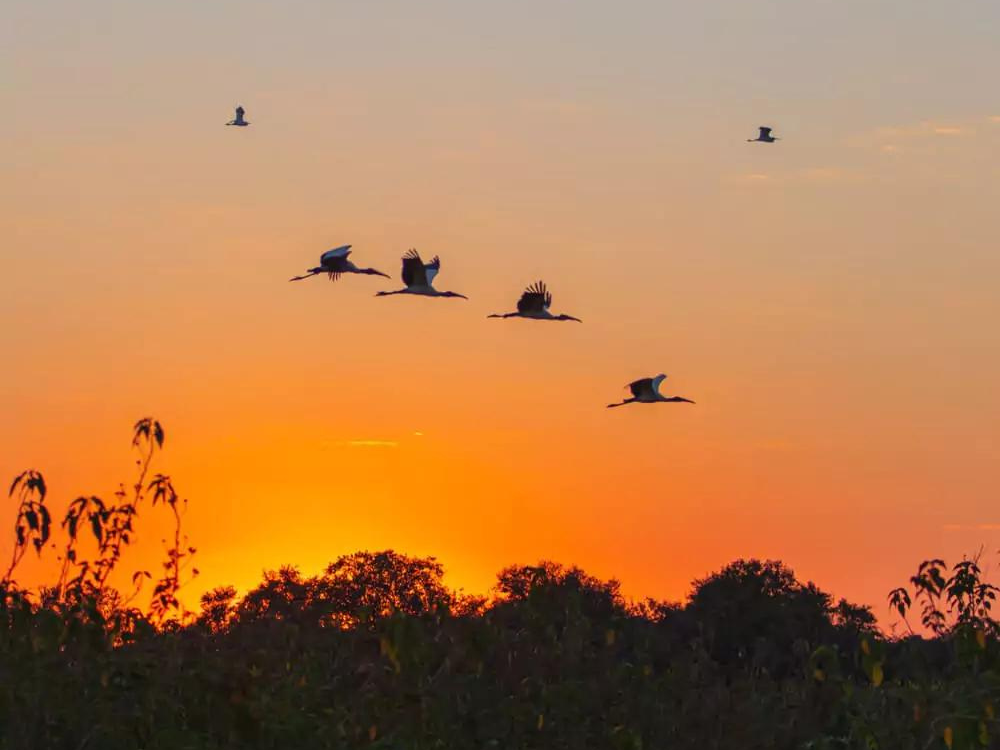
What to do in Pantanal?
The Pantanal offers a variety of tours that immerse you in its unique ecosystem and vibrant wildlife. Take a look at some of the main activities that you can enjoy:
Horseback Riding
Horseback riding is a traditional way of exploring the Pantanal, allowing visitors to cross flooded areas and access hard-to-reach places, all while experiencing the Pantanal lifestyle.
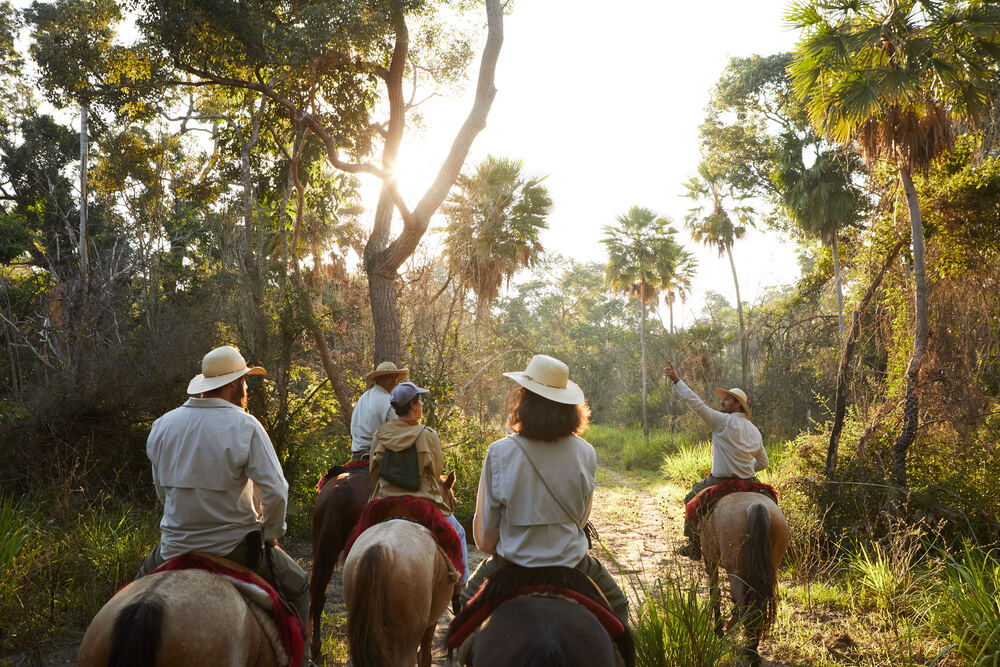
Experience a traditional and immersive way to see the Pantanal landscape. – Photo: Layla Motta
Jaguar Sighting
The Pantanal is the best place in the world to see jaguars in their natural habitat. In the Northern Pantanal, particularly around Porto Jofre, jaguar sightings are frequent along the banks of the Cuiabá River, making it the best place in the world for this activity. Lodges in this area offer specialized safaris in boats that provide excellent opportunities to observe and photograph these felines. The southern Pantanal also offers opportunities for jaguar sightings, although they are not very common. The only place in the southern Pantanal that will be able to see jaguars is in an ecological refuge in Miranda.
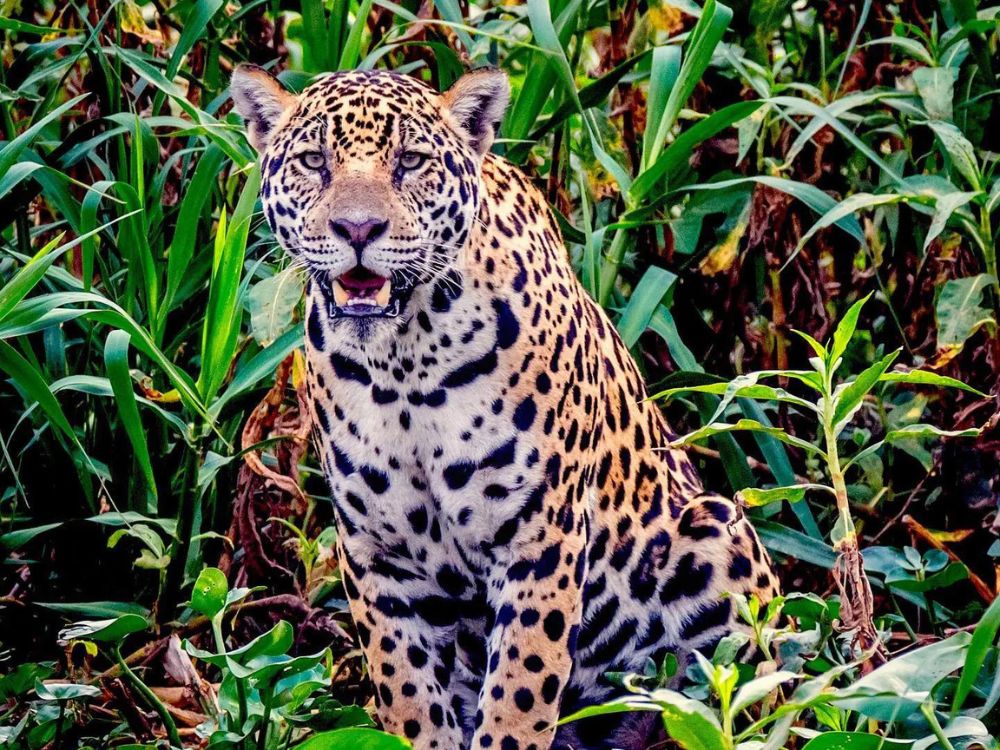
Go on a thrilling jaguar safari and capture stunning wildlife moments – Photo: @thewildlifejunkie
Photographic Safaris
Photographic safaris in the Pantanal are conducted in 4×4 vehicles, allowing visitors to explore the diverse landscapes and capture stunning images of the wildlife. These safaris are led by experienced guides who know the best spots for photography, including birds, reptiles, and mammals. The 4×4 vehicles enable access to remote areas, increasing the chances of encountering rare species and getting close-up shots of the Pantanal’s rich biodiversity.
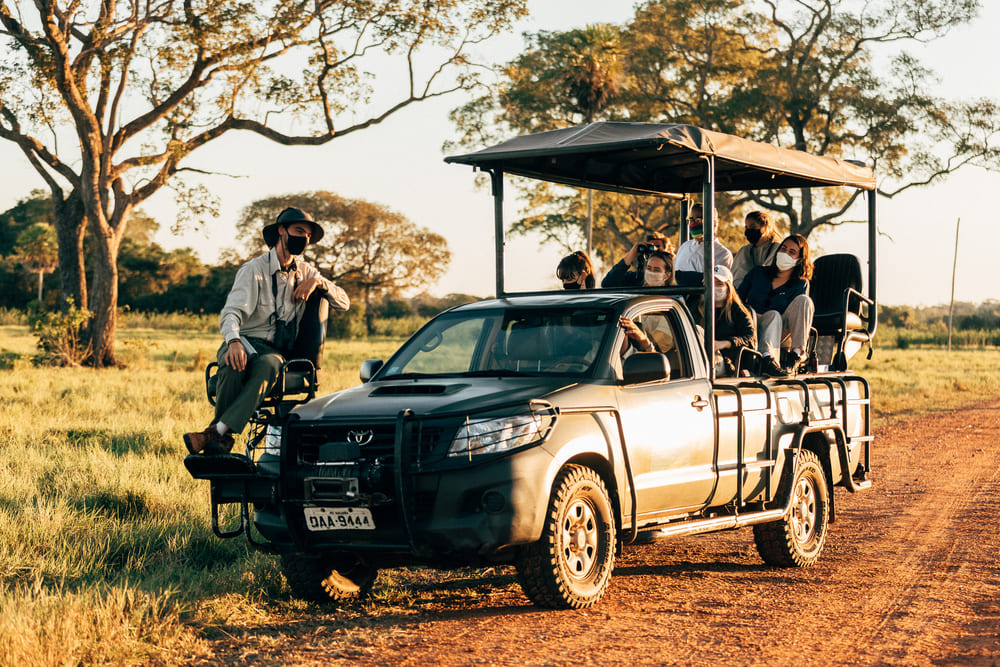
Capture the wildlife from Pantanal Brazil!
Boat Trip
Boat trips in the Pantanal offer an incredible way to observe wildlife from the water. As you navigate the rivers, you can spot a variety of animals, including capybaras, caimans, giant otters, and numerous bird species. These trips provide a unique perspective of the Pantanal’s ecosystem, allowing for close encounters with animals in their natural habitats.
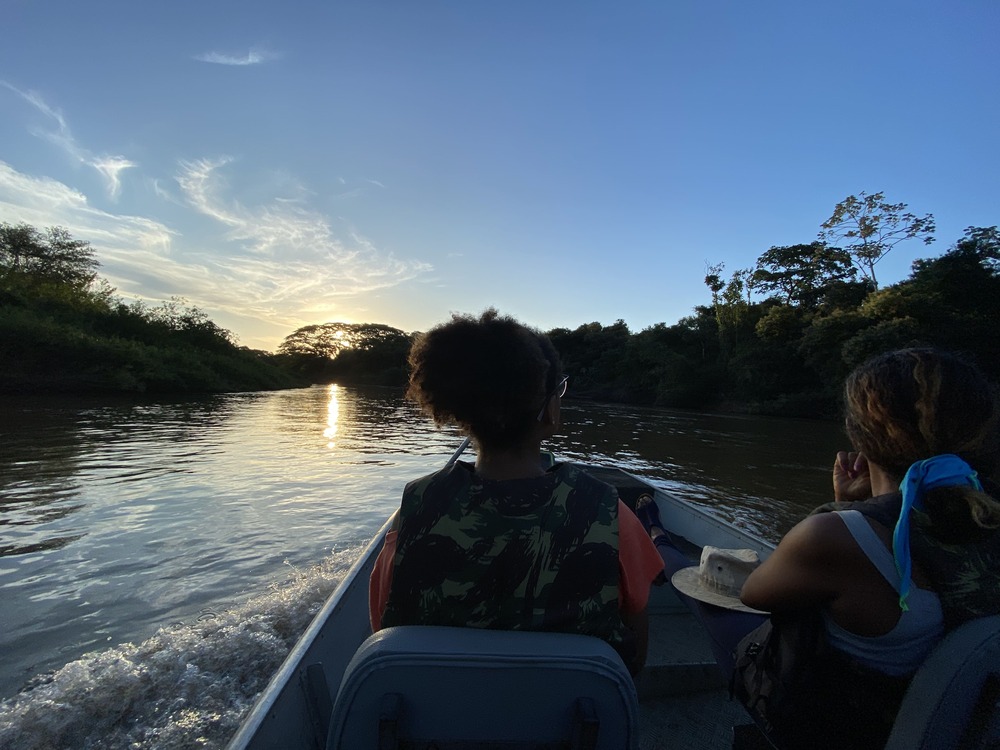
Explore the rivers on a boat trip and spot an array of unique wildlife.
Night Spotlighting
Using spotlights and flashlights, guides take visitors on night drives to spot nocturnal animals such as owls, alligators, and much more. The experience of seeing the Pantanal come alive at night is unforgettable, as many animals are more active and easier to spot under the cover of darkness. This activity offers a different and unique perspective on the region’s wildlife.

Watch the Pantanal’s nightlife come to life! – Photo: Felipe Castellari
Ecological Walks
Ecological walks in the Pantanal are guided hikes that allow visitors to explore and discover the area’s flora and fauna on foot. These walks are led by knowledgeable guides who share insights about the ecosystem, plant species, and animal behaviors.
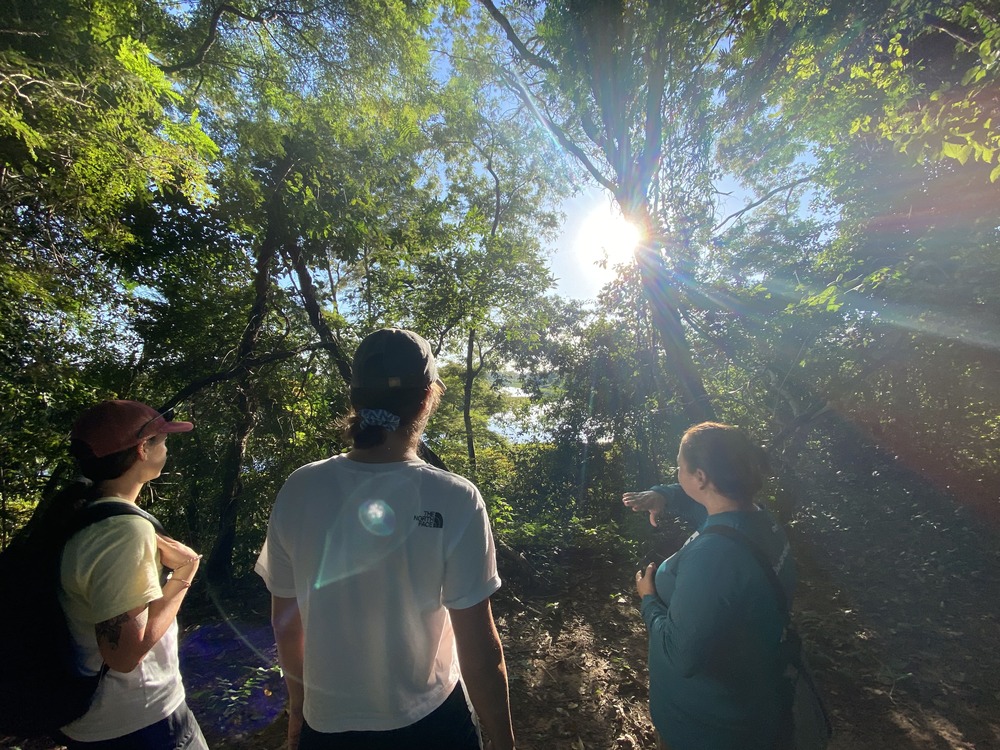
Go to the Pantanal and unwind in nature!
These activities and many more are carefully integrated into the exclusive travel itineraries offered by PlanetaEXO. Click here to discover more about the available tours!
Where to stay in Pantanal Brazil?
Keep in mind that the Pantanal is divided into two distinct regions: the Northern Pantanal, accessible via Cuiabá, and the Southern Pantanal, via Campo Grande. Given this and the vastness of the biome, it’s essential to consider the different types of stays between these regions when planning your trip.
In general, the accommodations in the Pantanal are typically found on traditional farms that have been transformed into conservation areas due to eco-tourism. Staying on these farms provides an authentic taste of the Pantaneiro lifestyle while you enjoy lodges that include meals, comfortable accommodations, and various activities, giving you a well-rounded experience.
If you’re heading to the Northern Pantanal, known as the best place in the world to see jaguars, the main towns to consider for your stay are Porto Jofre, Poconé, Barão de Melgaço, and Cáceres. Here, you will encounter simple but very comfortable accommodations with a rustic style that reflects the Pantaneiro lifestyle.
In the Southern Pantanal, the primary towns are Miranda, Aquidauana, and Corumbá, where you can engage in a variety of activities, immerse yourself in the beauty of the Pantanal wildlife. Here, you’ll find stays ranging from simple to luxurious, providing comfort while focusing on sustainability.
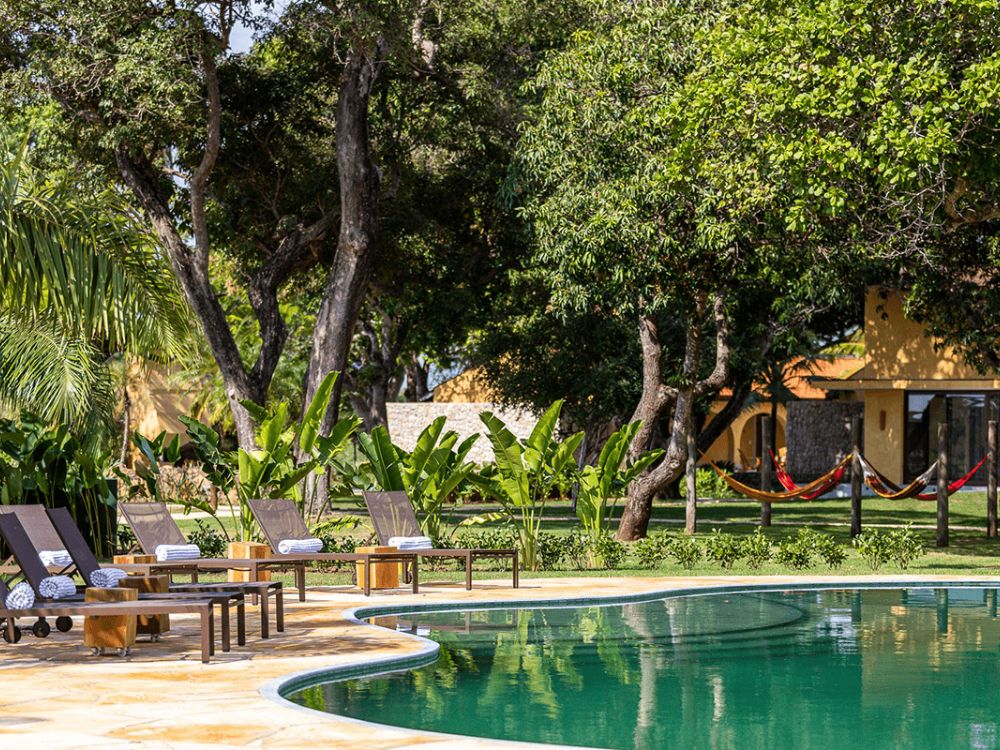
Experience authentic Pantaneiro hospitality at the lodges.
How many days do I need in the Pantanal?
To truly experience the Pantanal, plan for at least 4 full days. This is the minimum time needed to enjoy multiple safaris at sunrise and sunset, when wildlife activity is at its peak. It also allows you to explore different habitats, from open fields to flooded forests, and increase your chances of seeing species like jaguars, giant otters, hyacinth macaws, and capybaras.
If you can stay 5 days or more, you’ll have the opportunity to visit more remote regions, join specialized activities like jaguar tracking, birdwatching expeditions, or photography-focused tours, and engage more closely with local conservation projects. Reaching the lodges takes time, usually 2 to 6 hours by road from Cuiabá or Campo Grande, but the journey itself often feels like a wildlife safari, with sightings possible along the way.
Staying more days creates space for deeper experiences, from participating in conservation projects like jaguar monitoring and bird protection programs to learning about local biodiversity and environmental initiatives. It also allows for genuine cultural immersion, with chances to meet Pantanal families, visit local communities, and experience the traditional ranch lifestyle shaped by the region’s flood and drought cycles.
At PlanetaEXO, we offer carefully curated travel packages that help you choose the right itinerary based on your time, interests, and travel style.
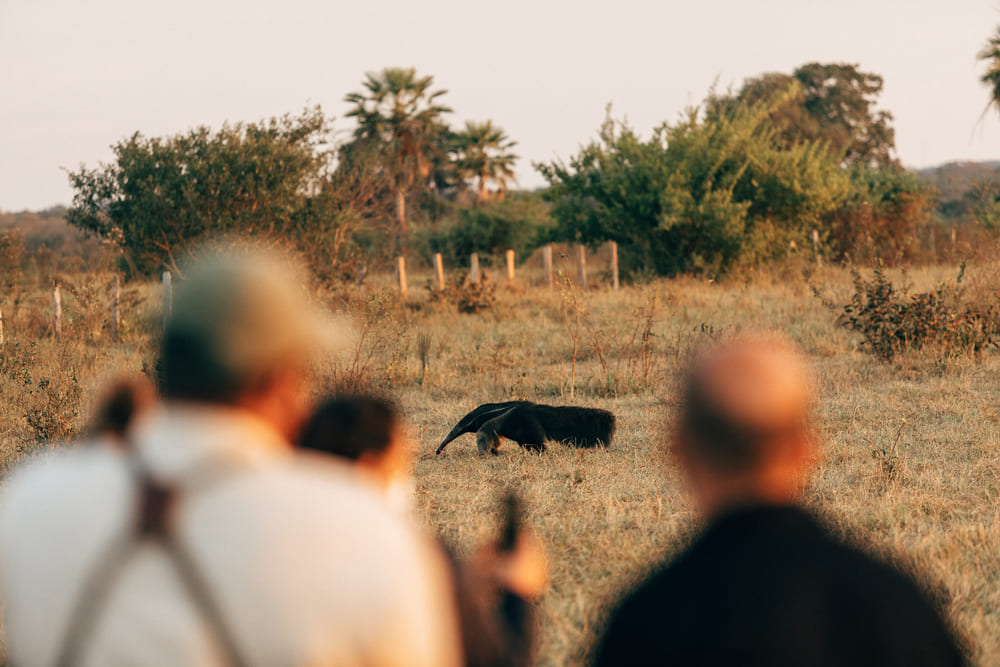
Support conservation and experience the local culture of Pantanal! – Photo: Felipe Castellari
What is the best Pantanal safari?
When choosing the best safari in the Pantanal, several factors come into play, such as the type of wildlife you wish to see, the level of comfort you desire to have, the specific experiences you seek and your budget.
The northern Pantanal, particularly the region around Porto Jofre, is famous for being the best place to jaguars sightings in the word. Here, safaris typically take place by boat along the Cuiabá River, providing excellent opportunities to see these felines. Beyond that, the safaris by boat tours are a perfect and different way to explore the region like the Pantanal Jaguar Safari in Porto Jofre offered by PlanetaEXO.
Alternatively, the southern Pantanal also offers remarkable safari experiences. If you have a larger budget, the best option is the ecological refuge for jaguars. This area is notable for its conservation and education efforts, helping to sustain local wildlife and promote eco-friendly tourism. It not only offers wildlife observation but is the only place in the southern Pantanal that guarantees a 98% chance of jaguar sightings. This location provides luxurious accommodations, ensuring a comfortable and memorable stay with the Luxury Jaguar Safari in the Pantanal tour.
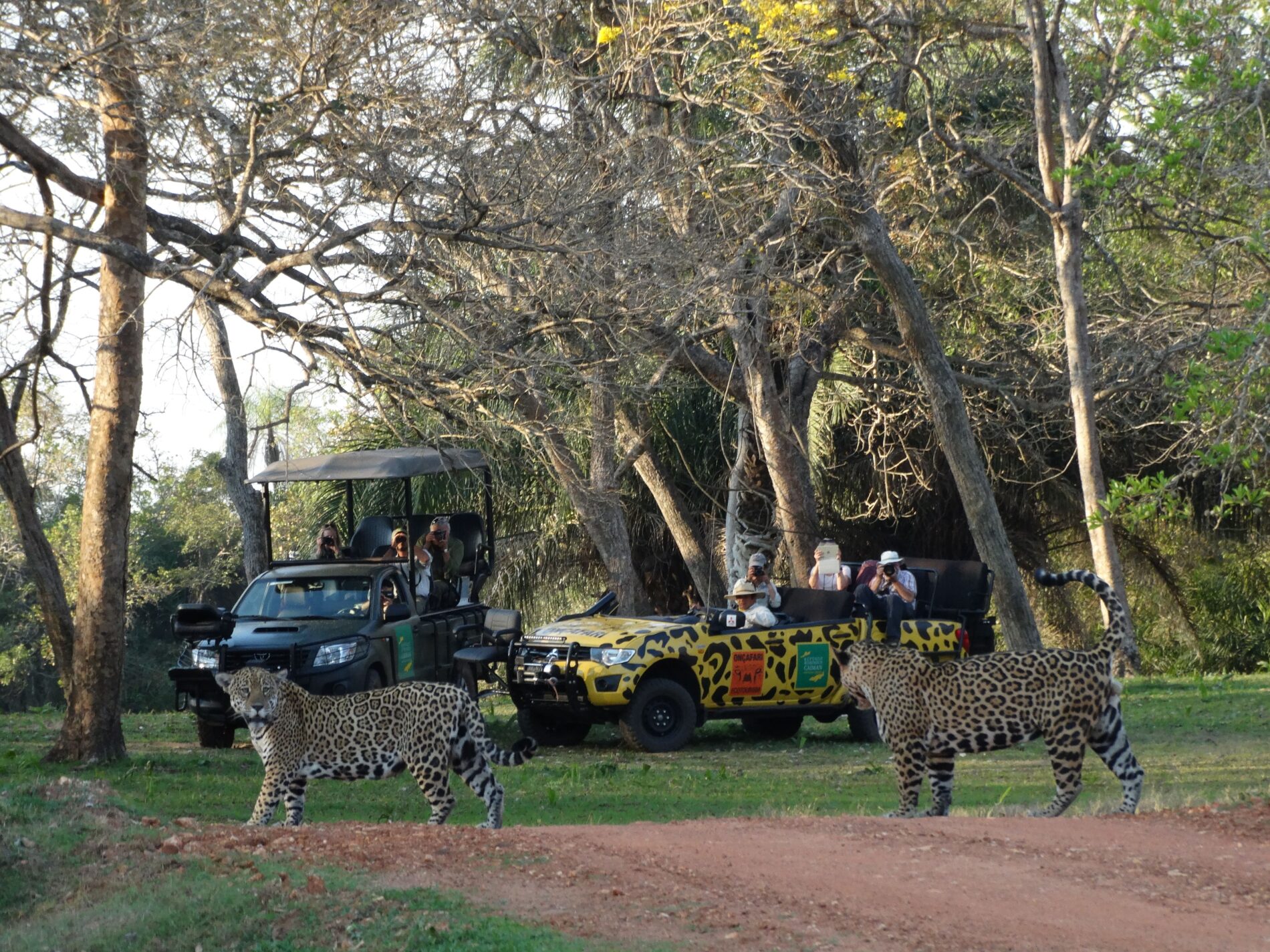
Stay on eco-friendly farms that blend conservation with adventures.
For those on a limited budget, there are other options for safaris in the southern Pantanal, such as the Pantanal Wildlife tour from Campo Grande. This adventure provides an incredible wildlife viewing experience with horseback riding, boat tours, jeep safaris, and ecological walks while enjoying simple and comfortable accommodations in lodges and delicious typical meals.
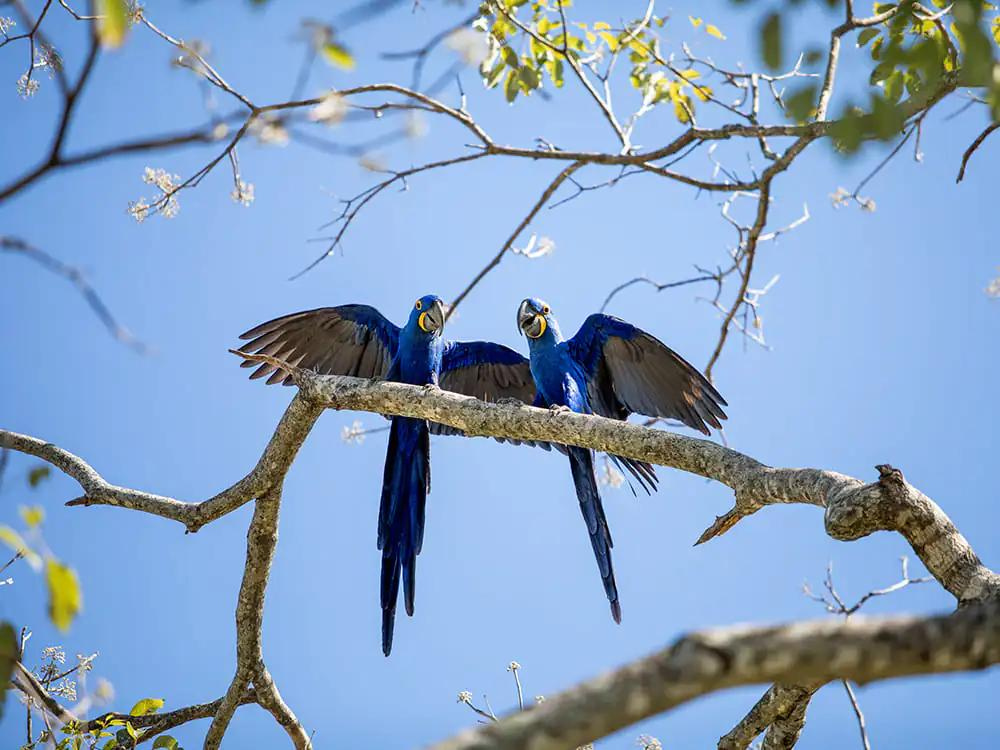
We also support cool projects that help nature, like the Arara Azul Project.
Both regions offer unique and unforgettable experiences. Whichever you choose, a Pantanal safari tour promises a trip filled with the wonders of one of the world’s most vibrant ecosystems.
What to bring to Pantanal?
When preparing for a trip to the Pantanal, packing the right gear is essential to ensure comfort and safety in this diverse and dynamic environment. Here’s a list of must-bring items to make the most of your experience.
- Light clothes (include at least one UV long-sleeved shirt and shorts/pants) – earth or light colors
- Lightweight jacket
- Swimming suit
- Socks
- 2 pairs of shoes- Tennis/ walking shoes and hiking
- Sunglasses
- Sandals (or water shoes)
- Hat
- Windbreaker or rain jacket
- Snacks
- Camera, batteries / battery charger for camera (underwater camera is also highly recommended)
- Dry-bag for camera and personal gear
- Daypack for hiking and short outings
- Bath towel and washcloth
- Binoculars
- Headlamp or flashlight + extra batteries
- Non-breakable reusable water bottle
- Waterproof sunscreen (SPF30)
- Insect repellent
What makes the Pantanal so special?
The decision to travel to the Pantanal not only allows an escape from the urban pace but also provides an authentic immersion in untouched nature. The Pantanal tours offer the opportunity to witness up close the biodiversity of the region while encouraging local tourism, supporting communities, and helping conservation efforts.
Furthermore, participation in conservation projects enables a direct contribution to the preservation of this unique ecosystem. Local traditions also add an enriching cultural layer to the journey, and visitors can experience this unique blend of culture and nature through ecotourism activities. Choosing to visit the Pantanal is a valuable opportunity to experience nature in its most authentic and vibrant form.
The Pantanal’s blend of diverse wildlife, breathtaking landscapes, and rich traditions makes it a truly special destination. Fully immerse yourself in the experience by exploring the wildlife of the Brazilian Pantanal. Join PlanetaEXO on one of the Pantanal tours and witness the unparalleled beauty that this region has to offer.
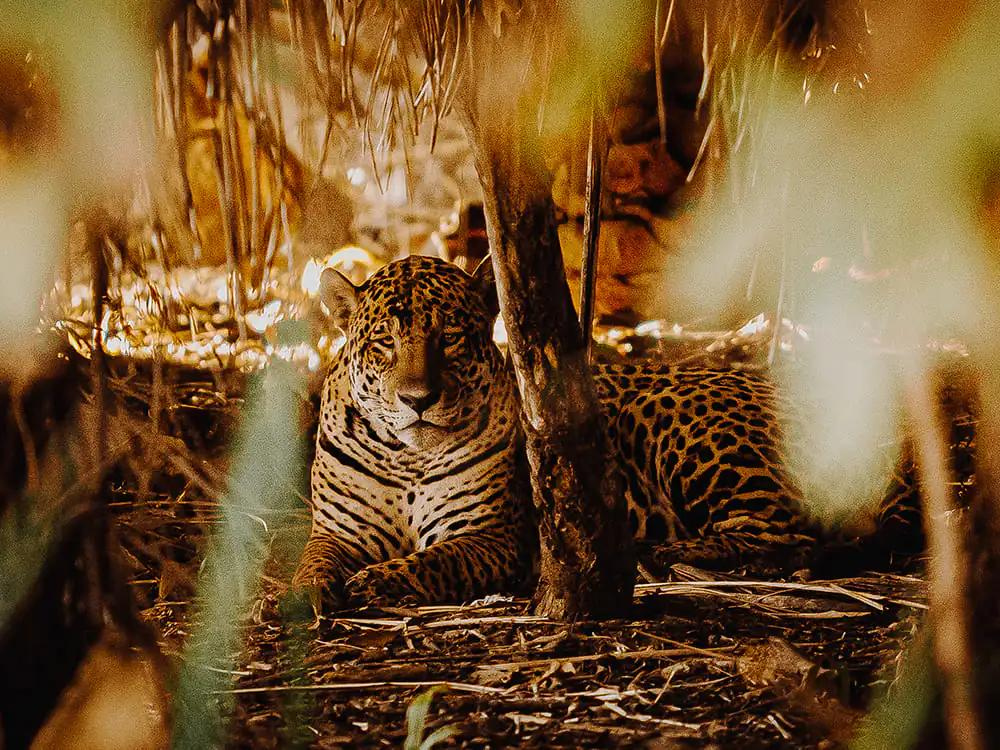
A biodiversity hotspot, the Pantanal is home to the highest concentration of wildlife in South America.
Ready to discover Pantanal Brazil?
Now that you know everything about the Pantanal, let PlanetaEXO guide you through this amazing adventure, immersing you in an extraordinary natural paradise. Experience our exclusive guided tours and safaris, led by local experts, through breathtaking views and unique and diverse wildlife.
Discover more and book your adventure today!
Read more!

